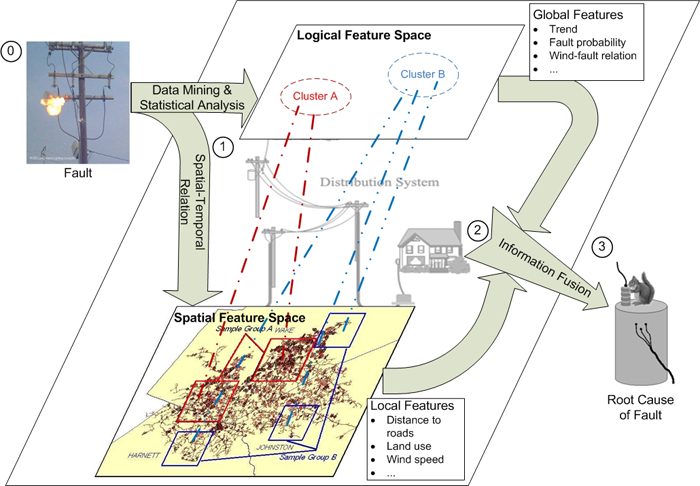
Small world stratification with causality aggregates both local spatial features (e.g., circuit connections, land use) and global logical features (e.g., strong wind is more likely to cause tree faults) from distributed information for effective and efficient power distribution fault diagnosis.
Power distribution systems are large-scale, nonlinear, time-varying, and geographically dispersed with a wide range of dynamic operating conditions with both global and local features. It is important to correctly diagnose system faults with proper causality and restore the systems in a timely manner to maintain their vitality. The concept of small world comes from the experiments on social networks – on average, two strangers can reach each other through six mutual friends. A small-world network can be modeled as a mathematical graph in which most nodes are not neighbors of one another, but can be reached from every other by a small number of hops. Small world with causality (SWC) adds the cause-and-effect in the small world network. This project uses the SWC concept to perform fault diagnosis in power distribution systems. Rather collecting and processing all data in a central location, SWC will properly search relevant data for decision making in a distributed manner. Highlights of this small-world with causality project include:
- Extract
- Global logical features through data mining and statistical analyses on Progress Energy and Duke Energy power distribution outage data,
- Local spatial features from GIS data (e.g., land-usage maps, vegetation maps), on-line weather maps, and power distribution circuits
- Develop an optimal causal structure to integrate the aforementioned information (data mining, GIS, etc.) for power distribution fault diagnosis.
We are also developing a spatial-time power distribution system fault simulator to provide a test-bed and research tool for this research project.
Documentations
- GIS in Power Distribution System Fault Daignosis
- Exploratory analysis of massive data for distribution fault diagnosis in Smart Grid

